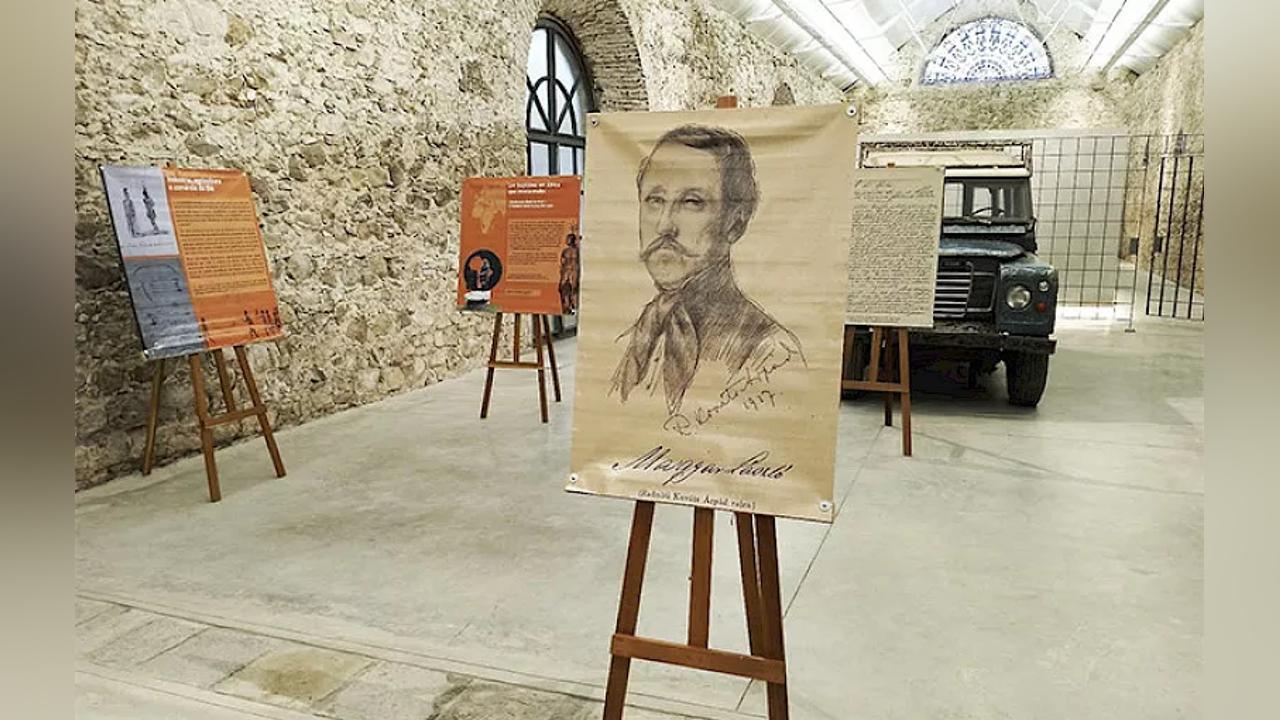Africa-Press – Angola. A traveling exhibition about the travels of the Hungarian explorer László Magyar to the Bié Plateau, in pre-colonial times, is open to the public at the National Museum of Archeology of Benguela (MNAB).
In an initiative of the Hungarian Embassy in Angola, the exhibition is a journey into the country’s pre-colonial past and aims to present the travels of László Magyar, who, even after his death, on November 9, 1864, in Cuio, province of Benguela, was unfairly interpreted in relation to the territories covered.
Thus, the exhibition, whose opening was witnessed by the extraordinary ambassador and plenipotentiary of Hungary in Angola, Zsolt Maris, evokes the past of László Magyar in Angola, especially in Bié, Benguela, Moçâmedes, Cunene and the Lunda and Lobal empires.
On the occasion, a commemorative plaque was inaugurated next to the Archeology Museum on the occasion of the 205th anniversary of László Magyar, in addition to a lecture given by the explorer’s researcher, Maria Alexandre Aparício, and the screening of a film.
Before the inauguration, Hungary’s ambassador extraordinary and plenipotentiary to Angola highlighted the work and life of László Magyar as an explorer, amateur geographer, linguist, researcher and special cultural link that unites the two countries and peoples.
For Zsolt Maris, there is no other Hungarian of his time who knew southeast Africa, namely the regions between the Cubango and Congo, Zambezi and Cunene rivers, better than László Magyar.
“In his diary, he described a precise and detailed image of 19th century Angolan society, so defined that it was studied and used by Portuguese and English explorers”, he stressed.
Hence he recognizes that his work has a fundamental importance for Angolan historiography, since, in his view, “no one knew the local languages and society like László Magyar, who lived in the “heart” of the court of the King of Bié, for a prolonged time.”
Meanwhile, Ambassador Zsolt Maris also expressed his desire to continue the tradition started five years ago, celebrating László Magyar’s birthday each year in different provincial capitals of the country.
The deputy provincial governor of Benguela for the Political, Economic and Social sector, Lídia Amaro, looks at the plaque in honor of László Magyar as an opportunity to immortalize the memory of all the men and women, national and foreign, who contributed to the construction of Benguela.
The minister highlighted the ties of friendship and historical cooperation with Hungary, which was one of the first countries to recognize the Independence of Angola in 1975, and the first economic, technical and scientific cooperation protocol was signed in 1977, with greater emphasis on for the field of education.
Likewise, he mentioned that the Hungarian explorer László Magyar established relationships of trust with the king of Bié – Kayaya Kayangula -, ending up marrying one of his daughters, Ina Kullu Ozoro, on May 23, 1849, according to African rites.
Former director of the National Archives of Angola and researcher of the explorer, Maria Alexandra Aparício considers László Magyar’s account to be the most detailed description of the economic, social and political organization, uses and customs and language of the Ovimbundu people in the era before Portuguese colonial rule.
After reading two passages taken from László Magyar’s travel diaries, in which the explorer highlighted the natives’ ability to read and write, Maria Alexandra Aparício admits that the Hungarian’s thoughts go completely against the colonial historiography that says that Africans do not know writing, which makes his work interesting.
For More News And Analysis About Angola Follow Africa-Press






